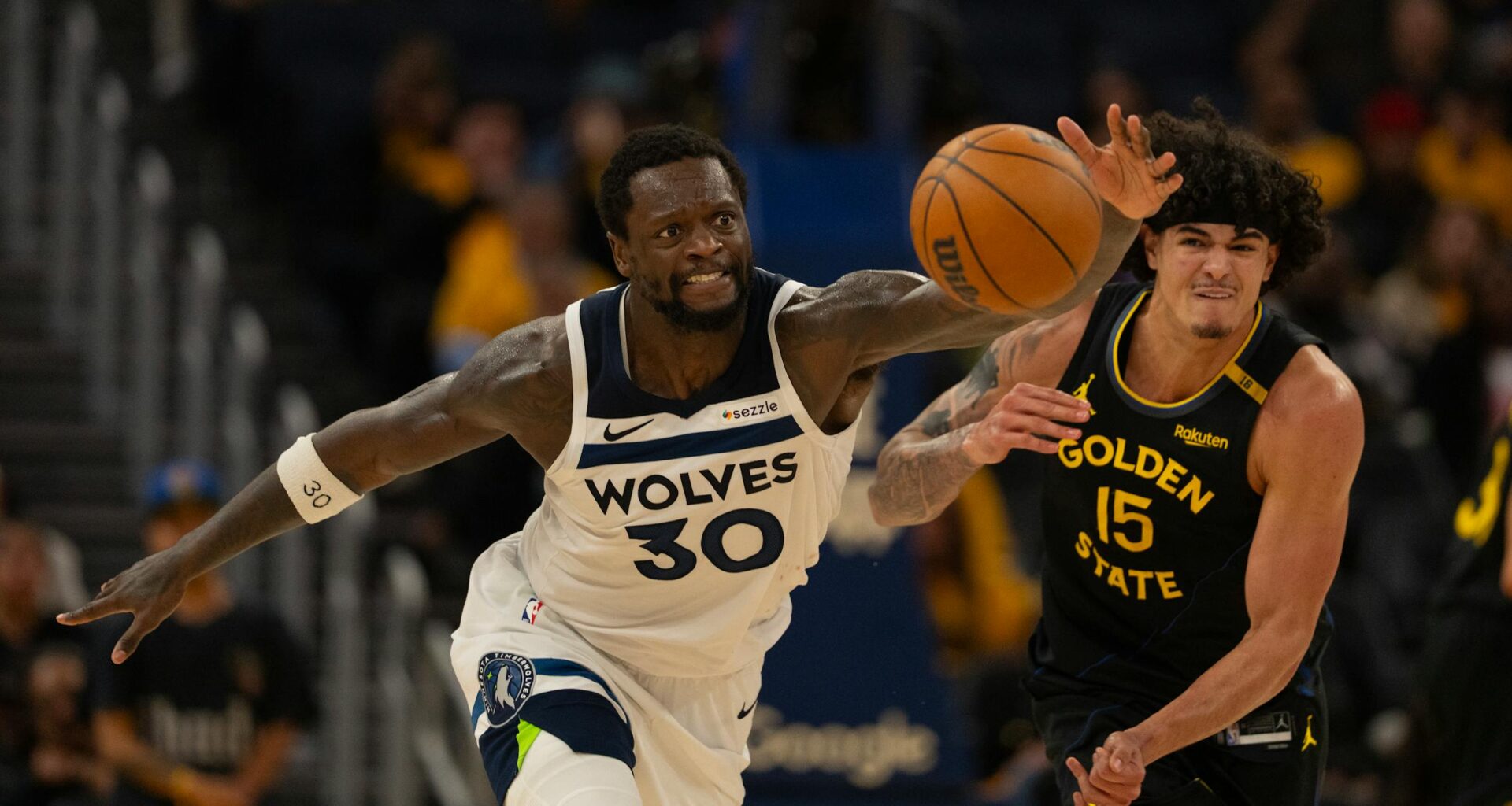In eight years of covering the Timberwolves, I’ve experienced awkward training camps and ho-hum ones. I’ve actually covered more training camps where a tinge of drama or the results of recent, significant roster upheaval preceded media day.
In those eight years I’ve covered the following storylines at media day/training camp: Jimmy Butler’s no-show in the early part of training camp as he demanded a trade (2018); the fallout of the firing of President Gersson Rosas only a few days before training camp after he remade the roster that offseason (2021); Anthony Edwards addressing for the first time a homophobic video he posted to Instagram a few weeks prior, which coincided with Rudy Gobert’s first in Minnesota after a major trade that offseason (2022); and the reaction to the trade the Wolves made just three days before training camp when they sent Karl-Anthony Towns to the Knicks for Donte DiVincenzo and Julius Randle (2024).
In each of those seasons, the Wolves had a lackluster start. In coach Chris Finch’s tenure, it has often taken the Wolves some time to find their footing after the roster underwent major changes — especially when those changes took place close to training camp, as they did last season.
There was one training camp not on that list, one that more accurately resembles where the Wolves are this season — 2023. Entering that camp, the Wolves decided to run back the Towns-Gobert double-big experiment, despite plenty of skepticism over the previous year that this roster construction would work. After leaning into the continuity — and after having a training camp in which everyone was healthy — the Wolves started that season 17-4 on their way to a 56-26 record and their first of two consecutive appearances in the Western Conference finals.
Where the Wolves are now mirrors where they were two seasons ago.
What Finch has shown is that eventually he and the team can figure things out. In 2021, they started 4-9 before making the playoffs. They learned lessons from that first year of Gobert-Towns that they applied the following season. Then came last year, when it took them a little over half the year to find their footing after the trade. Now, much like two seasons ago, they have a body of work to build on, and they can center on improving the margins.
The topics of discussion this training camp are much different than a year ago. Take, for instance, the emphasis on defense when Gobert is off the floor. Improving this wasn’t even on the team’s radar because it had no clue how that would work, much less how it would come up with ways to improve. Now, they have a season and postseason to draw from when it comes to analyzing how the Wolves defend when Randle and Naz Reid are manning the frontcourt. They know this team has to improve in transition and in clutch time.
It took Finch and Randle a while to figure out how he could best operate in the structure of Finch’s offense alongside Edwards. At first, Finch thought Randle should be more of a scorer to help alleviate pressure on Edwards. Then, they flipped that thinking, and Randle became more of a playmaker.

